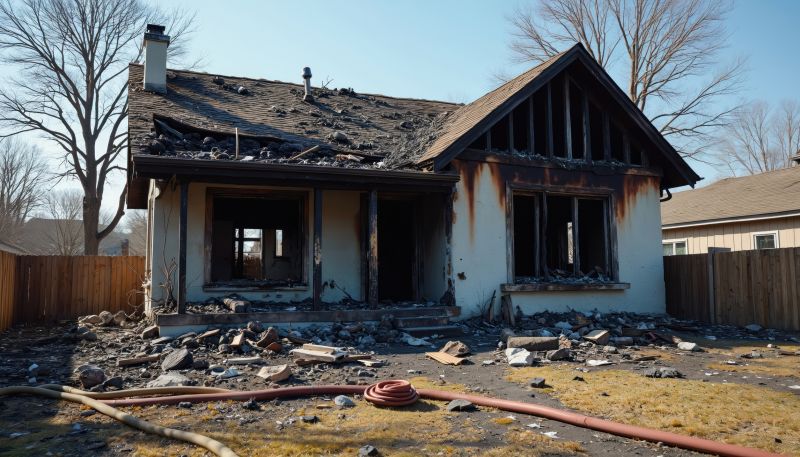Leading Fire Restoration Equipment for Complete Damage Recovery
Equip yourself with high-performance products that facilitate thorough cleaning, deodorizing, and rebuilding after fire incidents.
 Fire restoration is a complex process that involves careful assessment, cleaning, and repair to restore a property after fire damage. A critical aspect of this process is utilizing the right products designed to address the unique challenges posed by fire and smoke residues. These products help in removing soot, neutralizing odors, and preventing further deterioration of surfaces and materials. Proper selection and application of fire restoration products can significantly impact the efficiency and effectiveness of the restoration efforts, ensuring a safer and cleaner environment for occupants.
Fire restoration is a complex process that involves careful assessment, cleaning, and repair to restore a property after fire damage. A critical aspect of this process is utilizing the right products designed to address the unique challenges posed by fire and smoke residues. These products help in removing soot, neutralizing odors, and preventing further deterioration of surfaces and materials. Proper selection and application of fire restoration products can significantly impact the efficiency and effectiveness of the restoration efforts, ensuring a safer and cleaner environment for occupants.
Top Overall Option
Multi-Purpose Fire Damage Cleaning Kit
A versatile cleaning kit that includes a range of cleaning agents, odor neutralizers, and protective gear designed to address various aspects of fire damage restoration. It offers a comprehensive solution for professionals seeking an all-in-one package to manage soot, smoke, and residues effectively.
Types of Products For Fire Restorations
Soot Removers
Specialized cleaners formulated to effectively remove soot deposits from surfaces and materials.
Odor Neutralizers
Products designed to eliminate persistent smoke odors from indoor environments.
Smoke Sponges
Abrasive cleaning tools that lift soot and smoke residues without damaging surfaces.
Surface Sealants
Sealants used to lock in odors and prevent soot from penetrating porous materials.
Industrial Degreasers
Powerful cleaning agents for removing greasy residues left by smoke and soot.
Protective Gear
Respirators, gloves, and coveralls essential for safe handling of fire restoration products.
Deodorizing Sprays
Sprays formulated to neutralize and mask odors on fabrics and surfaces.
Cleaning Wipes
Pre-moistened wipes for quick cleaning of small soot and smoke spots.
Electrostatic Sprayers
Devices that evenly distribute cleaning solutions for large-scale restoration efforts.
Dry Ice Blasters
Equipment that uses dry ice particles to remove stubborn soot from surfaces.
HEPA Vacuums
High-efficiency particulate air vacuums for removing fine soot particles from air and surfaces.
Enzyme Cleaners
Biological solutions that break down organic residues and odors.
Paint and Primer
Specialized coatings used to seal surfaces after cleaning to prevent odor recurrence.
Water-Based Sealers
Sealants that create a barrier on porous materials to lock in odors and residues.
Thermal Foggers
Devices that disperse deodorizing agents throughout affected areas for comprehensive odor removal.
Popular Choices
Widely used products for removing soot and smoke residues from various surfaces.
Gels that absorb and neutralize odors over time in affected spaces.
Popular for their ability to trap fine soot particles during cleanup.
Commonly used for heavy-duty cleaning tasks in fire-damaged areas.
Effective for widespread odor neutralization in large spaces.
Essential for safety during cleaning and restoration activities.
Popular for sealing surfaces post-cleaning to prevent odor return.
Convenient for quick spot cleaning of soot and smoke stains.
Favored for its effectiveness in removing stubborn soot without damaging surfaces.
Increasingly used for efficient coverage of large areas.
Popular for organic residue and odor control.
Commonly chosen for their dual function in sealing and priming surfaces.
Simple, natural options for ongoing odor management.
Complete kits that include various cleaning and deodorizing products.
Popular for cleaning greasy residues from soot deposits.
Restoration professionals often rely on a variety of specialized cleaning agents, sealants, and odor neutralizers to manage the aftermath of a fire. These products are formulated to penetrate surfaces, break down stubborn residues, and neutralize lingering smells. Additionally, protective gear such as respirators and gloves are essential to safeguard workers from harmful particles and fumes during the cleaning process. The right combination of products and equipment can help streamline the restoration process while minimizing health risks.
When selecting products for fire restoration, it is important to consider factors such as compatibility with different materials, ease of use, and safety guidelines. Some products are designed for specific surfaces like drywall, wood, or metal, while others are multi-purpose. Proper training and adherence to manufacturer instructions are crucial to achieve optimal results. Investing in high-quality, effective products can also reduce the need for repeated treatments, saving time and resources in the long run. Overall, a comprehensive approach that combines effective products with professional techniques can facilitate a thorough and efficient fire restoration process.
Key Buying Considerations
- Compatibility with different surfaces such as drywall, wood, and metal.
- Effectiveness against soot, smoke residues, and odors.
- Ease of application and whether specialized training is required.
- Safety features, including non-toxicity and proper ventilation needs.
- Speed of action for cleaning and odor neutralization.
- Compatibility with existing cleaning equipment like sprayers or vacuums.
- Durability and long-term effectiveness of sealants and coatings.
- Availability of protective gear to ensure worker safety.
- Environmental conditions of the affected area, such as humidity and airflow.
- Cost-effectiveness and potential need for repeated treatments.
- Brand reputation and user reviews for reliability.
- Storage requirements and shelf life of products.
- Regulatory compliance and adherence to safety standards.
- Ease of disposal or recycling of used products and materials.
- Support and guidance from manufacturers or suppliers.
